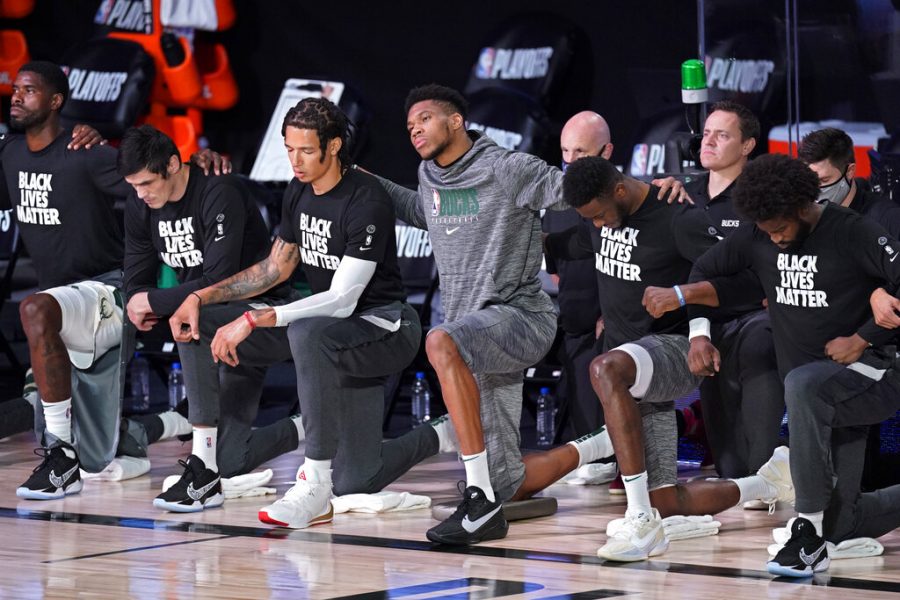Defining professional athletes role in time of Black Lives Matter
Today’s athlete must play a role in the Black Lives Matter movement and use their platform
On Wednesday, Aug 26, the Milwaukee Bucks were nowhere to be seen at tipoff time for their playoff game against the Orlando Magic. At this moment, very few knew what was happening, especially the fans viewing on their televisions. Soon it was announced that the Bucks would not be playing their game, and boycotting it in response to the police killing of Jacob Blake.
This form of protest, by a team stationed 45 minutes away from Kenosha, the town of the killing, created a ripple effect that went beyond basketball. The rest of the NBA playoffs were temporarily shut down, as were games in the WNBA, and even a select number of teams in the MLB decided not to play as a form of protest.
This may be a step in the right direction, but athletes today need to continue to do more to utilize their platform to push for change and the ultimate goal of social justice. Players and the NBA have already taken initiatives such as putting social justice messages on their jersey’s like “how many more” or “say their names.”
However, if true change is what is desired, more leagues than just the NBA need to do this. Even though the NBA is the most racially diverse sport, with Black players making up almost 75% of the total, according to The Atlas, that doesn’t mean other sports cannot play a role in the movement as well.
What individual athletes can do to create change is small things such as kneeling for the national anthem, filling their social media pages with messages and information about the Black Lives Matter movement, and continuing to speak up during interviews and press conferences. Some players have gone out of their way to highlight change, such as Denver Nuggets guard Jamal Murray, who wore shoes with the faces of George Floyd and Brianna Taylor painted on them. Another great example of this is San Antonio Spurs guard Patty Mills, who donated his salary to Black Lives Matter Australia (where he is from).
While some may argue that little things like this won’t make a difference, they need to look at the case of Colin Kapernick, a former NFL player, who was the first one in sports to take a knee to combat police brutality. His movement got so much momentum that you see dozens of players across almost every sport kneeling for the national anthem. What makes Kapernick’s act so critical is all the media attention he received afterwards, which created national awareness of his cause.
Today we see athletes take bigger strides than ever before, but there has been a history of athletes successfully protesting and getting attention for their cause. A perfect example is Muhammad Ali. Ali protested the Vietnam War by refusing to enter the draft and as a result, he was stripped of all his boxing titles, had his boxing license suspended, and was sentenced to five years in prison.
Like Ali, athletes now are doing everything in their control to bring attention to the country’s stark racial inequality.
The president of NBA players association and Oklahoma City Thunder guard Chris Paul said, “I chose ‘EQUALITY’ [to be placed on my jersey] because it reminds us that in order to have real impact and change, we need to make a conscious effort to level the playing field and create systems that are not bias based on race, education, economics or gender.”






































